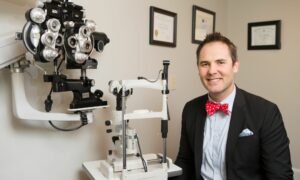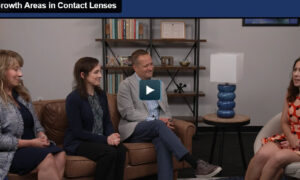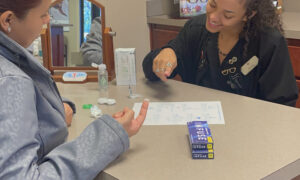By Thomas F. Steiner
Director of Market Research,
Review of Optometric Business 
SYNOPSIS
Higher consumer adoption and new technology make contact lenses agrowing revenue source in eyecare practices.The right strategy can increasethe annual amount spent by wearers.
ACTION POINTS
SUGGEST CONTACT LENSES. Suggest contact lens wear to virtually all patients.
PRESENT BENEFITS. Outline the benefits of newer designs:more comfortable, healthier and more convenient.
DISPENSE FREE TRIAL LENSES. Boost interest by getting lenses on eyes at no cost.
Many optometrists treat contact lenses as a niche category that yields less profit per wearer than do eyeglasses. This misconception causes some ODs to fit contacts only when patients request them. The result is missed opportunity.
Market trends clearly demonstrate that to optimize practice revenue and profitability, contact lenses should receive more attention than they do from ECPs.
In 2013, VisionWatch estimated that 16 percent of the total US population, and 21 percent of the vision correction population, wear contact lenses. That is up from 10 years ago, when 17 percent of the vision correction population wore contacts. Ten years from now, penetration is likely to reach 27 percent. The steady growth in contact lens usage has occurred as contact lenses have become more comfortable, safer and more convenient to wear. Contact lens technology innovation continues at a rapid pace, promising continued increases in penetration.
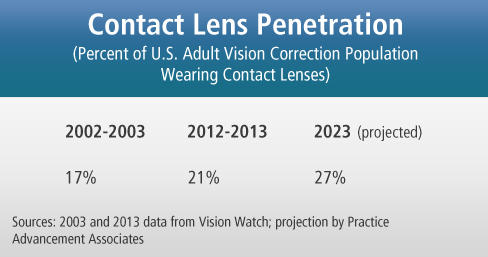 Contact lenses have become a more important source of ECP revenue not only because there are more wearers, but because contact lens patients are spending more each year to purchase lenses. Back in 1985, before disposable lenses appeared on the scene, it’s estimated that the average soft contact lens wearer spent $60 annually for lenses. Today, average annual purchases are $106. The increased annual consumption trend is currently accelerating, as more wearers choose daily replacement lenses.
Contact lenses have become a more important source of ECP revenue not only because there are more wearers, but because contact lens patients are spending more each year to purchase lenses. Back in 1985, before disposable lenses appeared on the scene, it’s estimated that the average soft contact lens wearer spent $60 annually for lenses. Today, average annual purchases are $106. The increased annual consumption trend is currently accelerating, as more wearers choose daily replacement lenses.
As these changes in consumer behavior have unfolded, it’s no surprise that the growth rate of US sales of soft contact lenses has surpassed eyeglass sales growth every year over the past 10 years. Over the decade, contact lens sales grew at a compound annual rate of 6.6 percent, as eyeglass sales grew just 0.7 percent. Contact lens sales have proven recession-proof, while eyeglass sales have not.
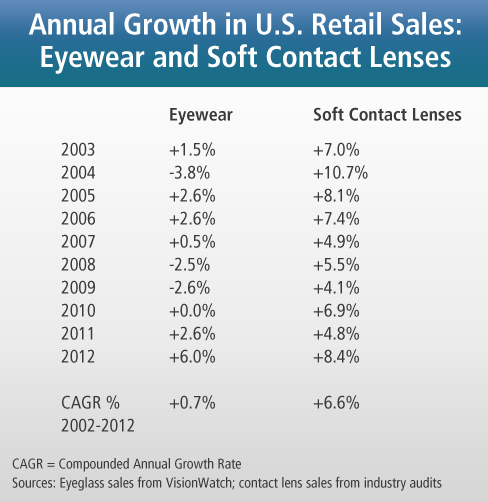
The major implication for ECPs of these long term market trends is that it pays to be more proactive in presenting contact lenses to prospective wearers, so as to increase the percentage of contact lens wearers in the active patient base. Based on surveys among independent practice optometrists, typical ECPs have an opportunity to increase their contact lens wearer base by 20-25 percent by offering free trial lenses to all potential candidates.
Related ROB Articles
The State of the Optometric Profession: Increase Demand Among Existing Patients
The State of the Optometric Profession: Optometry Has Excess Capacity
State of Independent Optometry: Optometry Dominates Primary Eyecare
Thomas F. Steiner, Director of Market Research for ROB, has spent more than 25 years helping eyecare practices succeed, including pioneering the introduction of color contact lenses into optometry. To contact him: tom.steiner@cibavision.com

